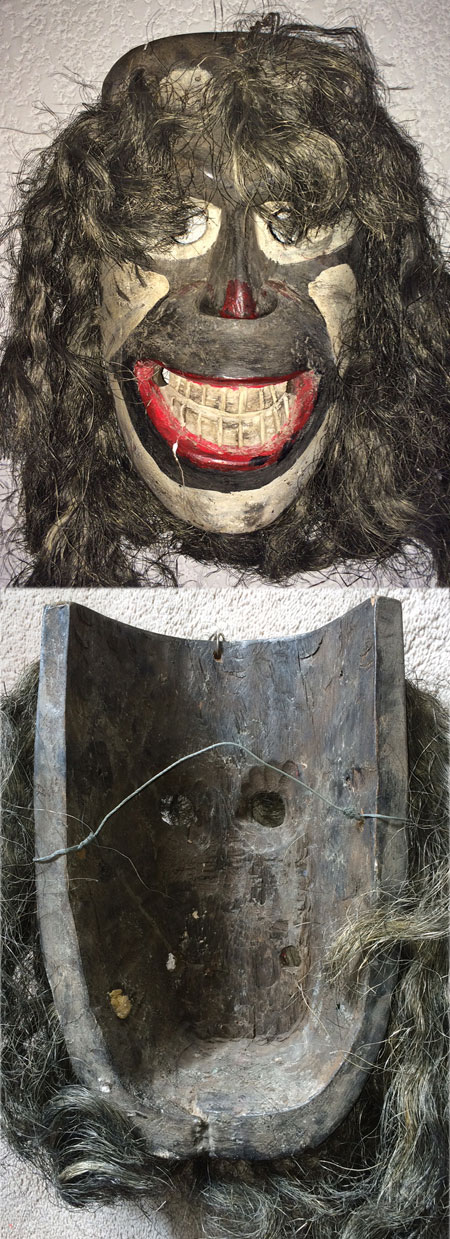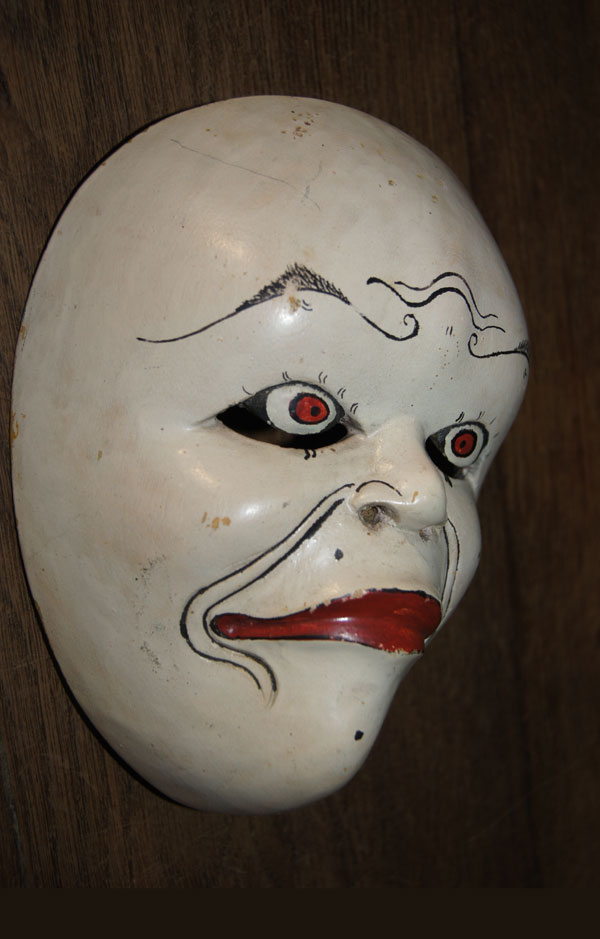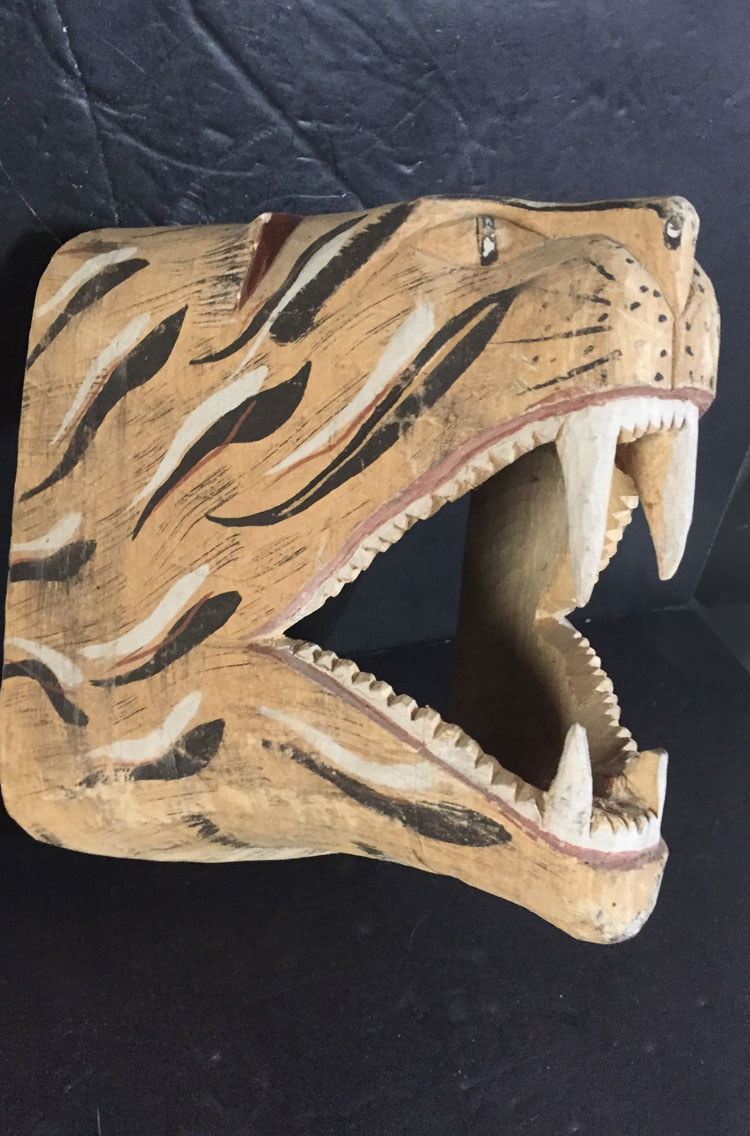 Q: I purchased this mask at an arts and crafts fair here in Mexico City. I believe it is originally from the state of Michoacan, but it could be from Guerrero or Oaxaca. I am most interested in masks related to devils or death. I attempt to obtain mask that are “bailadas” which means masks that have been used in some sort of festivity or ritual. Carlos, 736
Q: I purchased this mask at an arts and crafts fair here in Mexico City. I believe it is originally from the state of Michoacan, but it could be from Guerrero or Oaxaca. I am most interested in masks related to devils or death. I attempt to obtain mask that are “bailadas” which means masks that have been used in some sort of festivity or ritual. Carlos, 736
A: Thanks for explaining the types of masks that interest you most. I’d love to see more of them. Your mask may be related to the devil or death, but it is certainly unusual. It could be a weird monster mask that was made for tourists. Another possibility is that it somehow slipped in from Ecuador, which it more resembles in style of construction and wood selection. Also, I’d like to have the holes at the end of the mouth explained. I hope we get some comments.




2 Comments
Nate
The white eyes, shape of the eyes including the perfectly round circle-holes all strongly attest to Ecuador. The wood also seems denser than I’d expect from Mexico, especially Guerrero. I find the way that they backs of the eyes to be carved out to be the most interesting detail. That is more in line with what I’d expect a Japanese Carver to do… very detailed and precise there. Definitely not indicative to the way most Mexican masks are done. That said, in reviewing several authentic Ecuadorian masks, I do see this same carving technique used on the backside of the eyes. I’ve rarely seen long hair used on Ecuadorian stuff, and with that, I tend to lean towards a tourist item from Ecuador myself…99% sure its not Mexican. Unless of course there is a lonely Ecuadorian carver now living the life of a outcast in Mexico 🙂
Chris
Yes, I strongly agree with Nate. The eyes are very Cotopaxi-style. The mouth and the heavyness are, too. The holes on the mouth sides is probably because the carver was too lazy to carve the teeth neatly but nevertheless wanted the air to be able to come into the mask….else such a heavy mask can be a suffocating experience.
However, with dozens of authentic masks in my mind from this region, I have never seen one with the upper part of the head open like a Mexican mask – all the Ecuadorian ones show the typical oval shape with closure above. So maybe it’s an Ecuadorian carver adapting to Mexican shapes or a Mexican carver adapting to Ecuadorian ones 😉